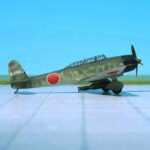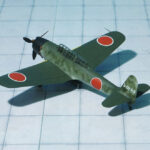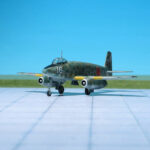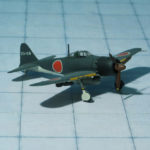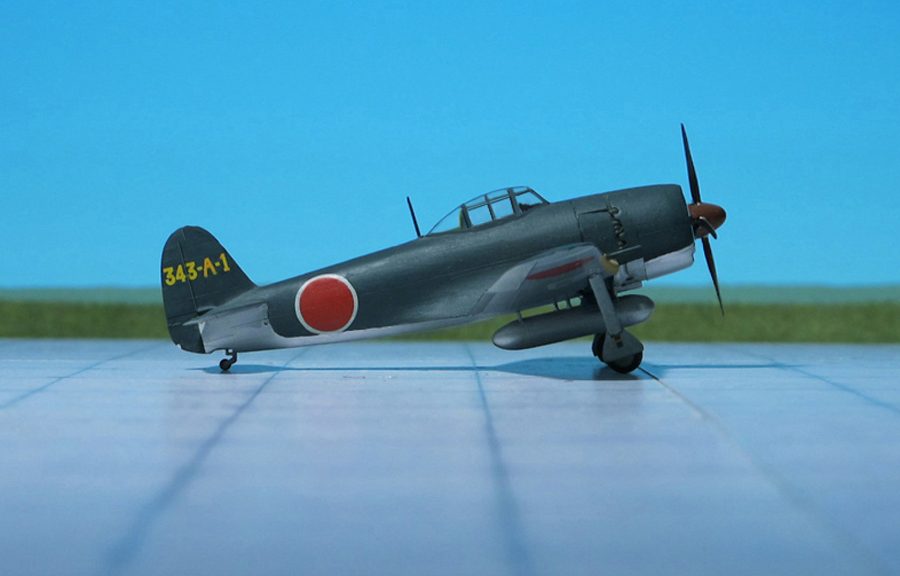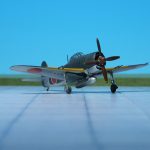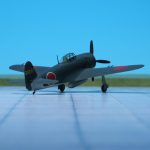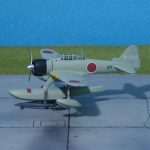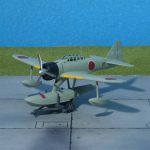TYPE: Carrier-based dive-bomber, reconnaissance aircraft
ACCOMMODATION: Pilot and observer/navigator
POWER PLANT: One Mitsubishi MK8P Kinsei 62 air-cooled radial engine, rated at 1,560 hp.
PERFORMANCE: 375 mph at 19,850 ft
COMMENT: The Yokosuka D4Y Suisei (Comet; Allied reporting name “Judy”) was a two-seat carrier-based dive bomber developed by the Yokosuka Naval Air Technical Arsenal and operated by the Imperial Japanese Nay (IJN) from 1942 to 1945 during World War II. Development of the aircraft began in 1938. The first D4Y1 was complete in November 1940 and made its maiden flight at Yokosuka the following month.
While the aircraft was originally conceived as a dive bomber, the D4Y was used in other roles including reconnaissance, night fighter and special attack (kamikaze)). It made its combat debut as a reconnaissance aircraft when two pre-production D4Y1-Cs embarked aboard the aircraft carrier Sōryū to take part in the Battle of Midway in 1942. It was not until March 1943 that it was accepted for use as a dive bomber. The early D4Y1 and D4Y2 featured the liquid-cooled Aichi Atsuta engine, a licensed version of the German Daimler-Benz DB 601, while the later D4Y3 and D4Y4 featured the Mitsubishi MK8P Kinsai radial engine.
The aircraft was a single-engine, all-metal low-wing monoplane, with a wide-track retractable undercarriage and wing-mounted dive brakes. It had a crew of two: a pilot and a navigator/radio-operator/gunner, seated under a long, glazed canopy which provided good all-round visibility. The pilot of bomber versions was provided with a telescopic bombsight. The aircraft had a slim fuselage that enabled it to reach high speeds in horizontal flight and in dives, while it had excellent maneuverability despite high wing loading, with the Suisei having superior performance to contemporary dive bombers such as the Curtiss SB2C Helldiver. In order to conform with the Japanese Navy’s requirement for long range, weight was minimized by not fitting the D4Y with self-sealing fuel tanks or armor, Subsequently, the D4Y was extremely vulnerable and tended to catch fire when hit
Bombs were fitted under the wings and in an internal fuselage bomb bay. It usually carried one 500 kg bomb but there were reports that the D4Y sometimes carried two 250 kg lb) bombs. The aircraft was armed with two 7.7 mm Type 97 machine guns in the nose and a The rear gun was replaced by a 13 mm Type 2 machine gun in the rear of the cockpit.
The aircraft was engined with the reliable Mitsubishi MK8P Kinsei 62 air-cooled radial engine radial engine as the Yokosuka D4Y3 Model 33. Although the new engine improved ceiling and rate of climb to over 33,000 ft, and climb to 9,800 ft in 4.5 minutes, instead of 30,800 ft and 5 minutes, the higher fuel consumption resulted in reduced range and cruising speed and the engine obstructed the forward and downward view of the pilot, hampering carrier operations. These problems were tolerated because of the increased availability of the new variant.
In October 1944, an attack by a lone D4Y3 resulted in the sinking of light carrier USS Princeton in the Batlle of Leyty Gulf. Similarly in March 1945, a single D4Y3 managed to hit the carrier USS Franklin with two bombs, nearly sinking Franklin and resulting in the loss of almost 800 of her crew. Famously, a D4Y3 was used in one of the final kamikaze attacks in 1945, hours after the surrender of Japan, with Vice Admiral Matome Ugaki in the rear cockpit (Ref.: 24).


















